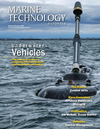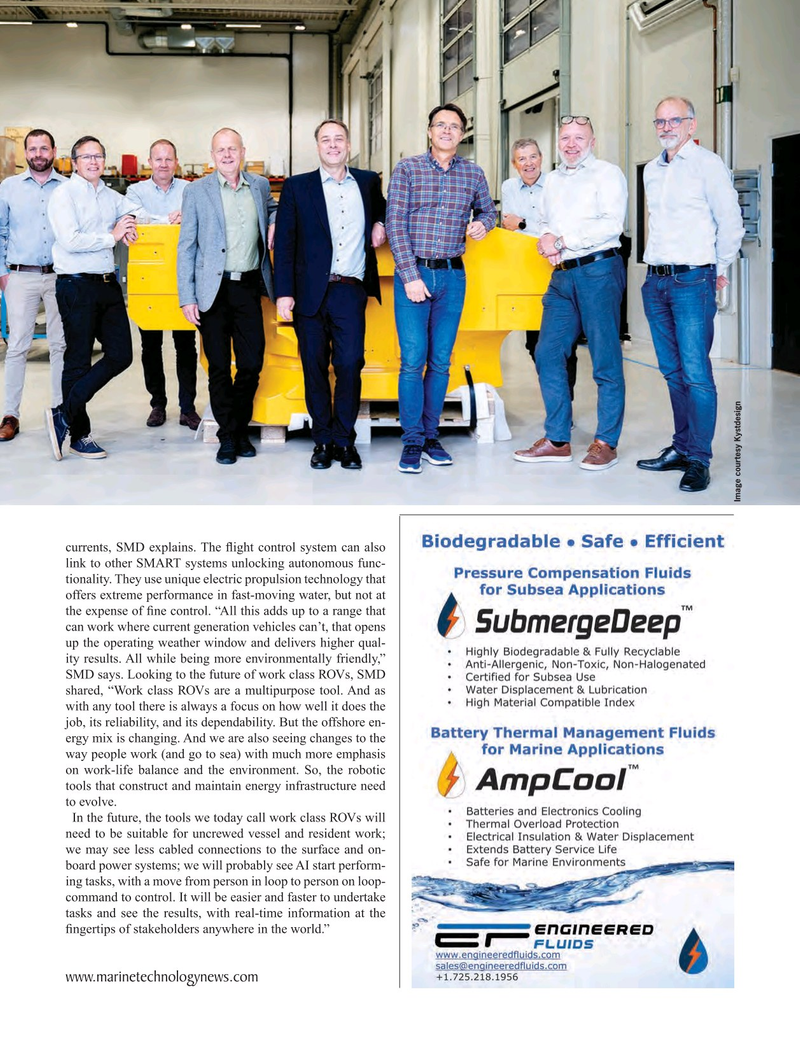
Page 47: of Marine Technology Magazine (January 2024)
Read this page in Pdf, Flash or Html5 edition of January 2024 Marine Technology Magazine
Image courtesy Kystdesign currents, SMD explains. The ? ight control system can also link to other SMART systems unlocking autonomous func- tionality. They use unique electric propulsion technology that offers extreme performance in fast-moving water, but not at the expense of ? ne control. “All this adds up to a range that can work where current generation vehicles can’t, that opens up the operating weather window and delivers higher qual- ity results. All while being more environmentally friendly,”
SMD says. Looking to the future of work class ROVs, SMD shared, “Work class ROVs are a multipurpose tool. And as with any tool there is always a focus on how well it does the job, its reliability, and its dependability. But the offshore en- ergy mix is changing. And we are also seeing changes to the way people work (and go to sea) with much more emphasis on work-life balance and the environment. So, the robotic tools that construct and maintain energy infrastructure need to evolve.
In the future, the tools we today call work class ROVs will need to be suitable for uncrewed vessel and resident work; we may see less cabled connections to the surface and on- board power systems; we will probably see AI start perform- ing tasks, with a move from person in loop to person on loop- command to control. It will be easier and faster to undertake tasks and see the results, with real-time information at the ? ngertips of stakeholders anywhere in the world.” www.marinetechnologynews.com
MTR #1 (34-49).indd 47 1/30/2024 6:41:24 PM

 46
46

 48
48
